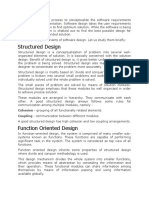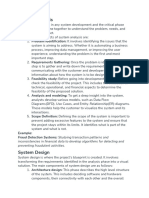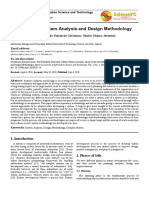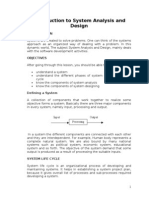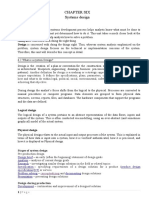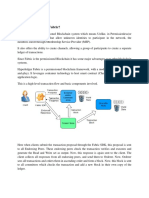0% found this document useful (0 votes)
114 views4 pagesSystem Design Strategies Guide
System Design Strategy in software engineering focuses on organizing program modules for ease of development and maintenance, utilizing techniques like Top-Down, Bottom-Up, Iterative, Incremental, and Agile Design. The choice of strategy depends on the system's requirements, size, complexity, and development methodology, aiming to improve software quality, efficiency, and communication. While well-designed systems can enhance development speed and maintenance, they may also be time-consuming and inflexible to changes.
Uploaded by
Kowsalya SelvanCopyright
© © All Rights Reserved
We take content rights seriously. If you suspect this is your content, claim it here.
Available Formats
Download as DOCX, PDF, TXT or read online on Scribd
0% found this document useful (0 votes)
114 views4 pagesSystem Design Strategies Guide
System Design Strategy in software engineering focuses on organizing program modules for ease of development and maintenance, utilizing techniques like Top-Down, Bottom-Up, Iterative, Incremental, and Agile Design. The choice of strategy depends on the system's requirements, size, complexity, and development methodology, aiming to improve software quality, efficiency, and communication. While well-designed systems can enhance development speed and maintenance, they may also be time-consuming and inflexible to changes.
Uploaded by
Kowsalya SelvanCopyright
© © All Rights Reserved
We take content rights seriously. If you suspect this is your content, claim it here.
Available Formats
Download as DOCX, PDF, TXT or read online on Scribd
/ 4



